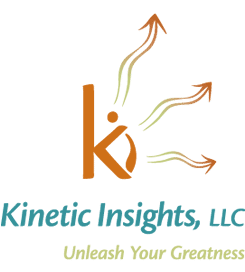If you are trying to improve employee engagement at your company, you may be working on the wrong thing. Ok, hold on….deep breaths….. let me explain.
We learned a number of years ago that there is a correlation between employee engagement and organizational performance. We also learned that there are a set of questions that are an accurate barometer of how engaged your people are. And then somewhere along the way we became more enamored with the diagnosis than the cure.
Many engagement programs are populated by a series of initiatives that are directly and literally targeting specific items in the engagement survey. I am not suggesting we don’t need a more engaged workforce, because we do – what I am saying is that many of us are going about it the wrong way.
In the last 5 years I have had a front row seat to three major engagement initiatives. Across all three I have observed a repeating set of issues.
Engagement Я Us
Everything becomes about engagement. I see disembodied organization-wide interventions that stand apart from business strategy. In one company, they are facing a tectonic shift in the entire business model for their industry. In 10 years the survivors won’t look anything like they do today – and everyone in the industry knows it. To survive the workforce needs to become more adaptable, risk taking, innovative and collaborative across functional lines. Yet nowhere in their engagement work will you hear any of these words. Instead, the project team meetings and leadership team presentations are mostly focused on how many people had development discussions, how many recognition letters were sent out, what kind of social events will help people connect and become better friends. Employees and managers are not seeing a connection between the engagement effort and the kind of culture and behaviors needed to support their strategic transformation.
“If you torture the data long enough, it will confess to anything.” – Ronald Coase
The only thing that gets talked about more than the engagement initiatives are the engagement survey scores. “Is 2.35 good? How bad are we relative to that other department? Is a .2 improvement good? How much do we need to improve to get our bonus? We had a monthly communication campaign on mission and purpose, why did that score go down?”
Managers are losing sight of why they are doing many of the things the engagement initiative is driving beyond raising the score of the next survey. On one of these cases I worked with the internal team. We spent hours with the consultants crafting responses to metrics questions, drafting communications about the data and revising metrics slides to be clearer. After the consultants left the room, we all looked at each other silently acknowledging that we all felt as frustrated as our colleagues. Why were the metrics all anyone wanted to talk about? The numbers had become the “thing” – the focus. The obsession with the numbers overshadowed any awareness of the reason for the engagement effort in the first place.
The Law of Initiative Fatigue
The Law of Initiative Fatigue states that when the number of initiatives increase while time, resources, and emotional energy are constant, then each new initiative—no matter how well conceived or well intentioned—will receive fewer minutes, dollars, and ounces of emotional energy than its predecessors. Most engagement efforts add considerably this load. After the engagement survey results are reported, teams at all levels meet to review their results and identify areas for improvement. Each department often will commit to two or three initiatives focused on their lowest scoring items. The division will often have at least one. Add to this another corporate-wide initiative from the CEO’s office and it is not uncommon for everyone to be involved in four or more distinct engagement initiatives. Without a very clear line of sight between engagement work and business strategy – these initiatives feel like add on’s that have little to do with immediate priorities.
Diagnosis and Treatment
The analogy I would make is this: It’s like a doctor treating a patient with a high fever by packing them in ice. The ice will lower the body temperature but there is no attempt to discover source of the infection causing the fever. Implementing actions that directly address the items on an engagement survey will yield some short term results – but unless the underlying reasons for lack of engagement are understood and addressed, the results will not be sustainable. You cannot look at engagement out of context of the strategic direction of the business and expect sustainable improvement.
For example, if your business strategy relies on faster decision making and market responsiveness, your top engagement strategy probably shouldn’t be to launch StrengthsFinder so people are more able to do what they do best every day (which is what two of these companies did to improve the score on that particular item). Streamlining decision making processes and eliminating two of your three levels of proposal review will give people more time to do what they do best than a half day workshop.
It’s this level of analysis that organizations should be doing with their data. Look at engagement data as an indicator of where you need to look deeper – and always in the context of the strategic direction of the business.
At Kinetic Insights, our PathFinders are skilled in helping leaders unleash the greatness in themselves and in their organizations. Call or email us for a quick discussion that just might put you and your team on the path to significant change.
Andrew Powell’s focus is customized team and organizational change consulting as well as executive coaching for growth-minded commercial organizations, government entities and non-profits.











Leave A Comment